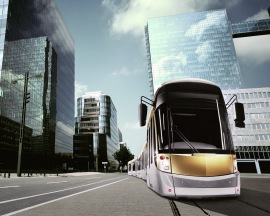 Transit networks have been considered by many as a measure, among others, by which to determine a city’s reputation or classification as a global city. Of those cities that have earned the prefix ‘global’, their networks are large and multimodal. Specific characteristics of those systems include reliability, vast coverage and high frequency. They offer service to real destinations e.g. employment centers, city centers, entertainment venues, etc. New York City, Chicago, Los Angeles and Seoul are examples of where networks’ designs reflect serious consideration for the need of the population. Service is almost door to door for the places people want to go. In some cases, the transit services themselves are attractions for visitors and transplants.
Transit networks have been considered by many as a measure, among others, by which to determine a city’s reputation or classification as a global city. Of those cities that have earned the prefix ‘global’, their networks are large and multimodal. Specific characteristics of those systems include reliability, vast coverage and high frequency. They offer service to real destinations e.g. employment centers, city centers, entertainment venues, etc. New York City, Chicago, Los Angeles and Seoul are examples of where networks’ designs reflect serious consideration for the need of the population. Service is almost door to door for the places people want to go. In some cases, the transit services themselves are attractions for visitors and transplants.
Life Blood
There’s something about seeing transit vehicles of various modes moving through a city like blood cells running through veins. It sparks a sense of life and progress because like clockwork, they are always on the move. Onlookers and passengers alike experience a feeling of vibrancy and that things are happening. Naturally, the reaction is to be a part of that so the attraction is great and it reaches not only to the hinterlands. People are drawn from around the globe to places that are exuberant with life derived from all of this movement. Being in the heart, or even near to it, drives people, life and ideas to flourish.
Aspirations
 For many cities looking to move up the ladder of global ranking, transit should not be left off the table of development projects. The inherent economic benefits alone should be enough to permit its inclusion in a well thought out comprehensive plan. Consistent, scheduled movement propels the dynamics necessary to attract and gain the attention sought. However, looking within to serve the immediate population by offering a world-class transit system will do much to address the external desires. We are now in the 21st century which requires aggressive policies and action to bring to the present that futuristic image of a city with advanced transit services that even includes driver-less trains, cabs and cars.
For many cities looking to move up the ladder of global ranking, transit should not be left off the table of development projects. The inherent economic benefits alone should be enough to permit its inclusion in a well thought out comprehensive plan. Consistent, scheduled movement propels the dynamics necessary to attract and gain the attention sought. However, looking within to serve the immediate population by offering a world-class transit system will do much to address the external desires. We are now in the 21st century which requires aggressive policies and action to bring to the present that futuristic image of a city with advanced transit services that even includes driver-less trains, cabs and cars.

Renchick
/ December 22, 2012I wish transit were considered more important in areas outside of major MSAs…Getting people to consider it necessary in my region is incredibly difficult – they think it is only for those who are economically or physically disadvantaged in some way – most would not use a public transport system themselves. Nice post 🙂
GeoSpeech
/ December 24, 2012The problems faced in smaller regions or less dense places could benefit from a good transit solution just as well as a major MSA. However, the challenge begins when problems are defined. If transport is not considered among those factors, then certainly the solution will reflect that by its absence. Since the context is different in some aspects from one area to another, it presents an opportunity for creativity and tailoring of a service that will fit a particular region. It doesn’t necessarily have to fit the mold established by federal guidelines which often look to the major systems for data.
Renchick
/ December 24, 2012Exactly 🙂